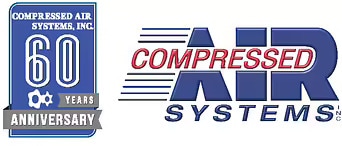
9303 Stannum StreetTampa, FL 33619-2658
Toll: 855.464.8525
Ph: 813.626.8177
Fx: 813.628.0187
Email: [email protected]

Shipping Weight |
N/A 1500 lb |
Feed at 90 psig (99.99 Purity) |
N/A 88 scfm |
Output at 70 psig (99.99 Purity) |
N/A 713 scfh |
Feed at 90 psig (99.9 Purity) |
N/A 86 scfm |
Output at 70 psig (99.9 Purity) |
N/A 1145 scfh |
Feed at 90 psig (99.5 Purity) |
N/A 82 scfm |
Output at 69 psig (99.5 Purity) |
N/A 1362 scfh |
Feed at 90 psig (99.0 Purity) |
N/A 94 scfm |
Output at 68 psig (99.0 Purity) |
N/A 1702 scfh |
Feed at 90 psig (98.0 Purity) |
N/A 102 scfm |
Output at 65 psig (98.0 Purity) |
N/A 2104 scfh |
Feed at 90 psig (95.0 Purity) |
N/A 113 scfm |
Output at 57 psig (95.0 Purity) |
N/A 2724 scfh |
Feed at 110 psig (99.99 Purity) |
N/A 100 scfm |
Output at 90 psig (99.99 Purity) |
N/A 810 scfh |
Feed at 110 psig (99.9 Purity) |
N/A 95 scfm |
Output at 90 psig (99.9 Purity) |
N/A 1301 scfh |
Feed at 110 psig (99.5 Purity) |
N/A 93 scfm |
Output at 88 psig (99.5 Purity) |
N/A 1547 scfh |
Feed at 110 psig (99.0 Purity) |
N/A 106 scfm |
Output at 86 psig (99.0 Purity) |
N/A 1934 scfh |
Feed at 110 psig (98.0 Purity) |
N/A 116 scfm |
Output at 80 psig (98.0 Purity) |
N/A 2392 scfh |
Feed at 110 psig (95.0 Purity) |
N/A 129 scfm |
Output at 75 psig (95.0 Purity) |
N/A 3095 scfh |
Minimum Storage Capacity (Air) |
N/A 120 gal |
Minimum Storage Capacity (N2) |
N/A 120 gal |
Voltage |
N/A 100 V115 V120 V |
Phase |
N/A 1 |
Power Supply Frequency |
N/A 50 Hz60 Hz |
Inlet Ports |
N/A 1 1/2 in |
Outlet Ports |
N/A 3/4 in |
Maximum Inlet Pressure |
N/A 150 psig |
Height |
N/A 85 in |
Width |
N/A 68 in |
Depth |
N/A 33 in |
|
N/A
Beer & Wine Manufacturing & Storage |
|
N/A
75% to 92% Cost Savings |
|
N/A
The earth’s atmosphere is comprised of approximately 78% nitrogen and 21% oxygen. Once atmospheric air is compressed, its pressure is increased while proportions of nitrogen and oxygen remain unchanged. Once the air is compressed it must be filtered and dried prior to its introduction to the GN2 system. |
|
N/A
|
|
N/A
Custom designed, larger capacity or non standard purity systems are available upon request |